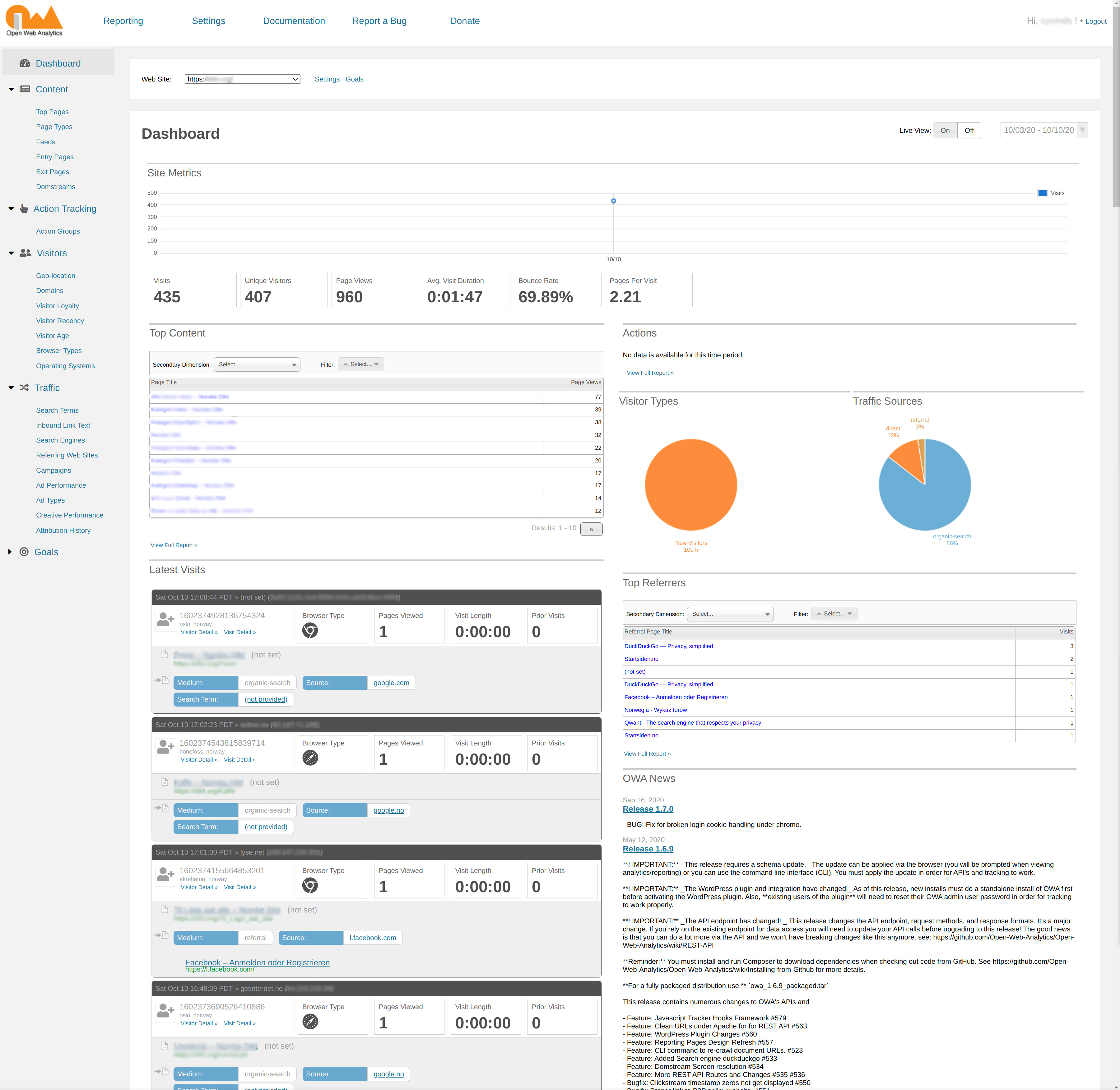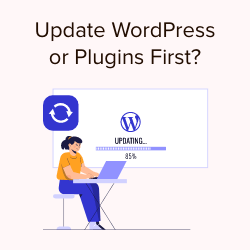Should I Update WordPress Or Plugins First: Best Practices
Should I Update WordPress Or Plugins First: Best Practices – Imagine you’re preparing to update your WordPress site, eager to enhance functionality and security. But you pause, unsure whether to update WordPress itself or your plugins first.
This isn’t just a technical question; it’s a decision that can impact your site’s performance and security. You want to make the right move, but the right order isn’t always clear. In this post, you’ll learn the optimal update sequence that ensures smooth sailing for your website.
We’ll simplify the process, helping you avoid potential pitfalls and keep your site running flawlessly. Curious to find out the best update strategy for your WordPress site? Keep reading to discover the expert insights that can save you time and prevent headaches.

Credit: houndstoothmediagroup.com
Why Updates Matter
WordPress updates are essential for every website owner. They ensure that your site runs smoothly and efficiently. Updates play a crucial role in keeping your website secure and up to date. Regular updates improve performance and add new features. They ensure your site stays relevant in the digital world. Let’s explore why these updates matter.
Security Enhancements
Security is a top priority for any website. Updates often include patches for security vulnerabilities. Hackers constantly seek ways to exploit outdated software. By updating WordPress and plugins, you close these loopholes. This helps protect your site from potential attacks. A secure website builds trust with your visitors.
Performance Improvements
Updates enhance your site’s performance significantly. They fix bugs and optimize code. This leads to faster loading times and a better user experience. A well-performing site keeps visitors engaged. It can also improve your search engine rankings. A faster site means happier users and more traffic.
Access To New Features
Updates often bring exciting new features to your site. These features can improve functionality and user experience. Staying current allows you to offer the latest tools and options. This keeps your site competitive in your industry. New features can attract more visitors and keep them coming back.

Credit: linuxreviews.org
Risks Of Delaying Updates
Delaying updates in WordPress can lead to serious problems. Updates often fix security issues and improve functionality. Ignoring them can make your site weak and outdated. Let’s explore the risks of not updating in time.
Vulnerability To Attacks
Outdated WordPress sites are prime targets for hackers. Hackers exploit known vulnerabilities in older versions. Regular updates close these security gaps. Keeping your site updated protects it from potential threats. Cyberattacks can disrupt your site’s performance. They can also steal sensitive data.
Compatibility Issues
Old plugins might not work with the latest WordPress version. This can cause conflicts and errors on your site. Updates ensure that all components work well together. Compatibility issues can lead to a broken site. A broken site can frustrate visitors and damage your reputation.
Potential Data Loss
Data loss is a serious concern with delayed updates. Bugs in outdated software can corrupt your site’s data. Regular updates help fix these bugs promptly. Losing data can affect your business operations. It is crucial to back up your site regularly. Backups protect your data during updates.
WordPress Core Vs. Plugins
WordPress updates bring new features and security patches. Choosing between updating the core or plugins first can be confusing. Understanding their differences helps in making the right decision.
Understanding Core Updates
Core updates improve WordPress functionality. They provide enhanced security measures. These updates often come with new features. Core updates are critical for maintaining site security. They ensure compatibility with themes and plugins. Ignoring them can lead to vulnerabilities.
Importance Of Plugin Updates
Plugins add unique functions to your site. Each plugin serves a specific purpose. Updates keep plugins running smoothly. They fix bugs and improve security. Outdated plugins can break site functionality. Regular updates prevent compatibility issues with the core.
Update Order: WordPress First
Updating your WordPress site is crucial for security and performance. Many users wonder about the correct update order: WordPress first or plugins? Prioritizing the WordPress core update can prevent many issues. This approach ensures compatibility and stability across your site.
Benefits Of Updating Core First
Updating WordPress first strengthens your site’s security. Hackers target outdated WordPress versions. A current version reduces vulnerabilities.
New WordPress releases often improve performance and features. These enhancements benefit your entire website. An updated core ensures plugins work well with new features.
Developers design plugins to align with the latest WordPress version. Updating WordPress first helps maintain alignment. This reduces the risk of incompatibility.
Impact On Plugin Functionality
WordPress updates can change core functions. These changes might affect plugin operations. Updating the core first allows plugins to adjust to these changes.
Plugins rely on WordPress functions to perform well. An outdated WordPress might cause plugin errors. An up-to-date core ensures smoother plugin functionality.
After updating WordPress, developers can release plugin updates. These updates address compatibility and functionality issues. Ensure plugins are compatible with the latest WordPress version.
Update Order: Plugins First
Many WordPress users often wonder about the correct update order. Should you update your plugins first or WordPress itself? Prioritizing plugins in the update process comes with its own set of advantages. This method can significantly enhance your site’s performance and security. Let’s explore why updating plugins first might be the best choice for your WordPress site.
Advantages Of Prioritizing Plugins
Updating plugins first ensures compatibility with the current WordPress version. Developers frequently release plugin updates to match the latest WordPress features. This practice minimizes conflicts and errors on your site. Plugin updates often fix security vulnerabilities swiftly. This reduces the risk of cyber threats and keeps your site safe. Regular plugin updates can improve functionality and efficiency. They introduce new features that enhance user experience.
Effect On WordPress Stability
Updating plugins before WordPress often stabilizes your site. It reduces the chance of encountering unexpected errors. This process ensures that plugins fully support the existing WordPress version. Stability is crucial for user engagement and site performance. A stable site loads faster and delivers smoother interactions. Prioritizing plugins can prevent downtime and maintain site reliability.
Steps To Safe Updating
Update WordPress core first for a stable base. Plugins come next to ensure compatibility. Follow this order for smooth updates.
Updating your WordPress site is crucial for security and functionality. The process requires caution and proper steps. Mishandling updates can lead to site issues. Follow these steps to ensure safe updating.
Backup Your Site
Always start with a backup. This protects your data. Use reliable plugins for backups. Store backups in multiple locations. Cloud storage is a good option. A backup acts as a safety net. It lets you restore your site if issues arise. Never skip this step.
Check Compatibility
Ensure updates are compatible. Check themes and plugins compatibility. Incompatible updates can break your site. Read reviews and forums for insights. Developers often share compatibility notes. Check your PHP version too. Compatibility checks prevent unexpected problems.
Test Updates In Staging Environment
A staging environment is a replica of your site. Test updates here first. It allows you to spot issues before going live. Many hosts offer staging environments. Test every update thoroughly. This step saves you from public mishaps. Make adjustments as needed. Then proceed to update your live site.
Tools For Managing Updates
Deciding whether to update WordPress or plugins first can be confusing. Start with WordPress core updates for stability. Follow by updating plugins to ensure compatibility and security enhancements.
Managing updates in WordPress can sometimes feel like playing a game of Jenga. One wrong move, and your site could wobble or even crash. You might wonder whether to update WordPress or plugins first. To help, there are several tools and strategies that make managing updates easier and safer. Let’s dive into some effective methods.
Automatic Update Plugins
Automatic update plugins can be a lifesaver, especially if you are managing multiple sites. These tools automatically update WordPress core, themes, and plugins, saving you time and effort. Consider using plugins like Easy Updates Manager or Jetpack. They allow you to set preferences for what gets updated automatically. It’s a great way to ensure that you don’t miss any critical security patches. However, automatic updates are not for everyone. They may lead to compatibility issues if a new version of a plugin doesn’t play well with others. So, always have a backup plan.
Manual Update Strategies
Manual updates give you more control over what changes on your site. This approach is ideal if you’re running a complex site with many custom features. Check for compatibility by reading plugin updates’ release notes. This can help you understand what changes are coming and how they might affect your site. Schedule your updates during off-peak hours to minimize impact on your visitors. You can also use a staging environment to test updates before applying them to your live site. Have you ever updated a plugin and found that it broke your site? This is why having a rollback plugin is wise. It acts as a safety net, allowing you to revert to the previous version if something goes wrong. So, what’s your preferred method of managing updates? The choice between automatic and manual updates often boils down to your site’s complexity and your comfort level with the technology. No matter which path you choose, keeping your site up to date is key to maintaining its security and performance.

Credit: www.wpbeginner.com
Frequently Asked Questions
What Should I Update First: WordPress Or Plugins?
It’s best to update WordPress core first. This ensures compatibility and security. Once updated, proceed with plugin updates. This order minimizes potential conflicts. Always back up your site before updating. Regular updates keep your site secure and functional.
Why Is Updating WordPress Important?
Updating WordPress enhances security and fixes bugs. It also introduces new features and improves performance. Outdated software can be vulnerable to attacks. Regular updates ensure your site runs smoothly. Always back up your data before updating to prevent data loss.
How Often Should I Update WordPress Plugins?
Check for plugin updates weekly. Regular updates ensure compatibility with the latest WordPress version. They also enhance site security and performance. Outdated plugins can introduce vulnerabilities. Always back up your site before making any updates to avoid potential issues.
Can Outdated Plugins Affect Site Performance?
Yes, outdated plugins can slow down your site. They may cause compatibility issues with newer WordPress versions. This can lead to security vulnerabilities. Regular updates ensure optimal performance and security. Always back up your site before updating plugins.
Conclusion
Updating WordPress and plugins in the right order matters. Start with WordPress. It ensures compatibility with plugins. Next, update your plugins. This keeps them running smoothly. Regular updates improve security and performance. They protect your site from threats. Always back up before updating.
This saves you from potential issues. Staying updated keeps your website healthy. It also provides a better experience for users. Remember, a well-maintained site attracts more visitors. Happy updating!


